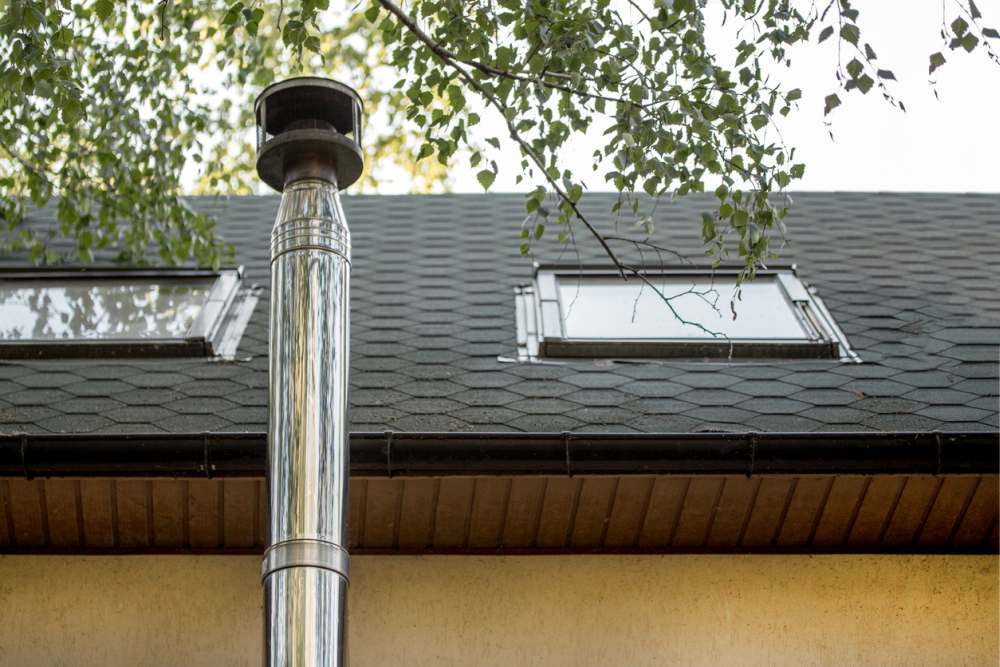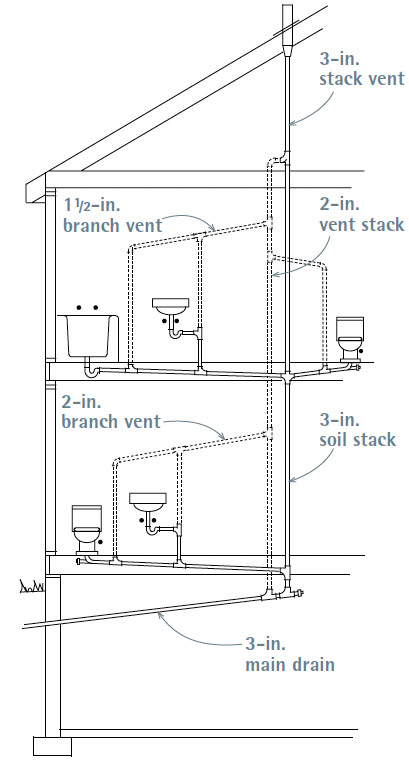Adequate Ventilation in Plumbing Systems: How It Is Essential
Adequate Ventilation in Plumbing Systems: How It Is Essential
Blog Article
Listed here on the next paragraphs you will find additional awesome content pertaining to What Is a Plumbing Vent and Why Is It Important.

Correct air flow in plumbing systems is often ignored, yet it is vital for maintaining the capability and safety and security of your home's plumbing. Air flow helps manage air pressure, stop the build-up of damaging gases, and ensure the effective elimination of waste. In this overview, we will discover the importance of appropriate plumbing ventilation, exactly how it works, and the benefits it offers your plumbing system.
Recognizing Air Flow in Plumbing
Air flow in pipes describes the network of pipelines that enable air to stream with the drain system. These vents serve several functions, including controling air pressure within the pipelines, protecting against sewage system gases from getting in the home, and helping in the smooth flow of wastewater.
Just How Air Flow Functions in Pipes Systems
Atmospheric Pressure Law
Correct ventilation keeps balanced air pressure within the plumbing system. When water moves with pipelines, it displaces air. Without sufficient air flow, this displacement can create unfavorable pressure, leading to slow drains or siphoning of water from traps, which can create unpleasant odors to permeate right into the home.
Preventing Sewer Gas Accumulation
One of one of the most vital features of plumbing vents is to prevent drain gases, such as methane and hydrogen sulfide, from collecting within the home. These gases can position severe wellness threats and are highly combustible. Vent pipelines permit these gases to escape safely outdoors.
Aiding in Waste Elimination
Ventilation aids in the reliable elimination of wastewater by protecting against airlocks in the water drainage system. When air can flow openly via the vents, it permits water and waste to flow smoothly with the pipes, lowering the risk of blockages and backups.
Sorts Of Plumbing Vents
Key Heap Vent
The major pile air vent, also called the vent pile, is the primary vent in a plumbing system. It expands from the major drainpipe align with the roof covering, permitting gases to run away and fresh air to enter the system.
Branch Vent
Branch vents connect to the main pile air vent and serve specific components, such as sinks, commodes, and showers. These vents make sure that each component has appropriate air flow to function properly.
Air Admittance Valve (AAV).
An Air Admission Valve (AAV) is a one-way valve that permits air to enter the pipes system without the demand for a traditional vent pipe extending with the roof covering. AAVs are commonly used in renovations or locations where mounting a typical air vent is unwise.
Indicators of Poor Air Flow in Pipes.
Slow Draining Fixtures.
If your sinks, tubs, or toilets are draining pipes slowly, it could be a sign of inadequate ventilation. Inadequate air circulation can produce a vacuum cleaner effect, making it difficult for water to drain pipes correctly.
Gurgling Appears.
Gurgling noises originating from drains are commonly a result of air being sucked via water catches as a result of unfavorable pressure in the pipes. This is a clear indicator of insufficient ventilation.
Undesirable Odors.
Sewage system smells inside your home are a warning that your plumbing system is not properly ventilated. This could imply that sewage system gases are not being properly vented outside, bring about potentially unsafe conditions.
Common Air Flow Errors.
Insufficient Vent Sizing.
Using undersized vent pipelines can bring about poor air circulation and stress imbalances in the system. It's important to utilize vents that fulfill the particular demands of your pipes system.
Improper Vent Placement.
Placing vents too far from the fixtures they serve can decrease their effectiveness. Proper positioning makes certain that air can flow freely and effectively via the system.
Ignoring Code Needs.
Building codes offer certain standards for pipes air flow. Ignoring these codes can cause a system that fails to operate properly and might bring about costly repair services or health hazards.
Advantages of Correct Ventilation.
Enhanced System Performance.
Correctly aerated plumbing systems run more successfully, with fewer blockages, faster draining pipes, and much less stress on the pipelines. This efficiency extends the lifespan of the pipes system.
Improved Air Quality.
By protecting against drain gases from entering your home, correct air flow adds to better interior air top quality, making your living setting healthier and more comfy.
Protecting Against Water Damages.
Ample air flow aids prevent water from being siphoned out of catches, which can result in sewer gases getting in the home and triggering water damage over time.
Steps to Guarantee Appropriate Air Flow.
Consulting Plumbing Codes.
Constantly get in touch with regional pipes codes when developing or modifying your plumbing system. These codes give the essential guidelines for appropriate airing vent and guarantee your system satisfies safety and security criteria.
Normal Inspection and Upkeep.
Routine examinations can assist identify potential ventilation problems prior to they become significant issues. Maintenance jobs, such as cleaning air vent pipes and checking for clogs, are vital for maintaining the system in good working order.
Professional Setup.
For new installments or major alterations, it's wise to hire a professional plumber. They have the competence to make certain the air flow system is correctly created and mounted according to code.
Conclusion.
Appropriate ventilation is a critical element of any kind of pipes system, making certain that it functions effectively and safely. By understanding the value of air flow, identifying the indications of inadequate air flow, and taking actions to keep your system, you can avoid costly concerns and protect your home's air quality.
Understanding the Role of Your Plumbing Vents in the Drainage System
The plumbing system in your home is more than just the kitchen sink, toilet, and bathroom. Some problems that arise within home plumbing are hard to detect because homeowners may not understand potential causes.
One part of the plumbing system that could cause you endless problems is the venting. The drain lines that run through your home and drain wastewater need proper venting to function properly. Faulty plumbing vents can lead to several problems that require the expertise of a plumber to check them out. Before finding experienced plumbing services, there are a few things to learn about plumbing vents.
Why vents are vital
Vents in the plumbing system lead to an outside area such as the roof or the back. The function of these vents is to keep sewer gases away from the drain pipes. They also establish seals in the drainage pipes that prevent the sucking back of waste gases into the home. Venting in the plumbing system also allows oxygen to get into the drainage system, which is an essential component in the breakdown of waste matter. The vents also ensure that the air pressure within the drainage system remains balanced, facilitating the flow of wastewater.
Possible problems
When the plumbing vents are problematic, one of the consequences is imbalanced water levels in the toilet. If you notice that the levels in the toilet bowl rise and fall all the time, then there may be something wrong with the vents.
Another issue is air bubble formation within the toilet. In most cases like these, the drain pipes are not receiving enough air. Lack of air pressure equalization is what leads to water flow problems. If you come across such issues in your home, make sure you call professional plumbers, such as the ones from Perfection Plumbing & Drain Cleaning Ltd.
Potential causes
Several scenarios can lead to some of the plumbing problems that homeowners suffer because of venting. One such scenario is the use of incorrectly sized vents. Usually, vents are the same size as the drain line to facilitate proper venting. Vents that are too small will lead to some plumbing issues. Another potential cause is fixtures that are not close enough to the vents. In this scenario, air forces itself through the traps of other fixtures, leading to gurgling sounds from toilets and sinks.
Most of these problems also happen with clogged vents. Tree leaves and debris can cause clogging when they make their way down a vent. Unclogging plumbing vents is a service that you can entrust to Saskatoon plumbers. They will know how to snake down vents and remove clogging stuck in fixtures.

As a serious person who reads about , I thought sharing that piece of content was important. Liked our write up? Please share it. Let other people find it. Thanks for going through it.
Schedule Free Estimate Report this page